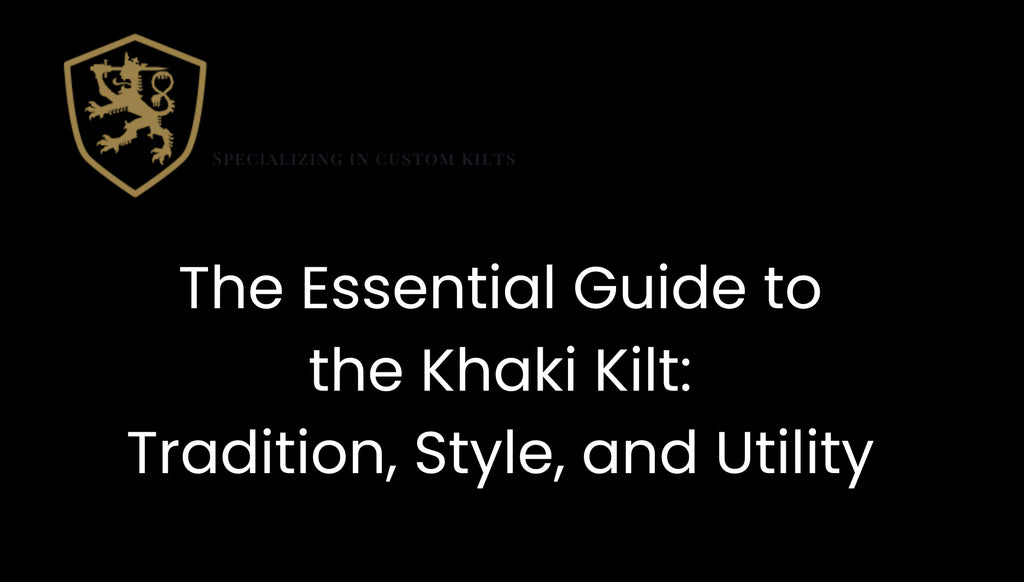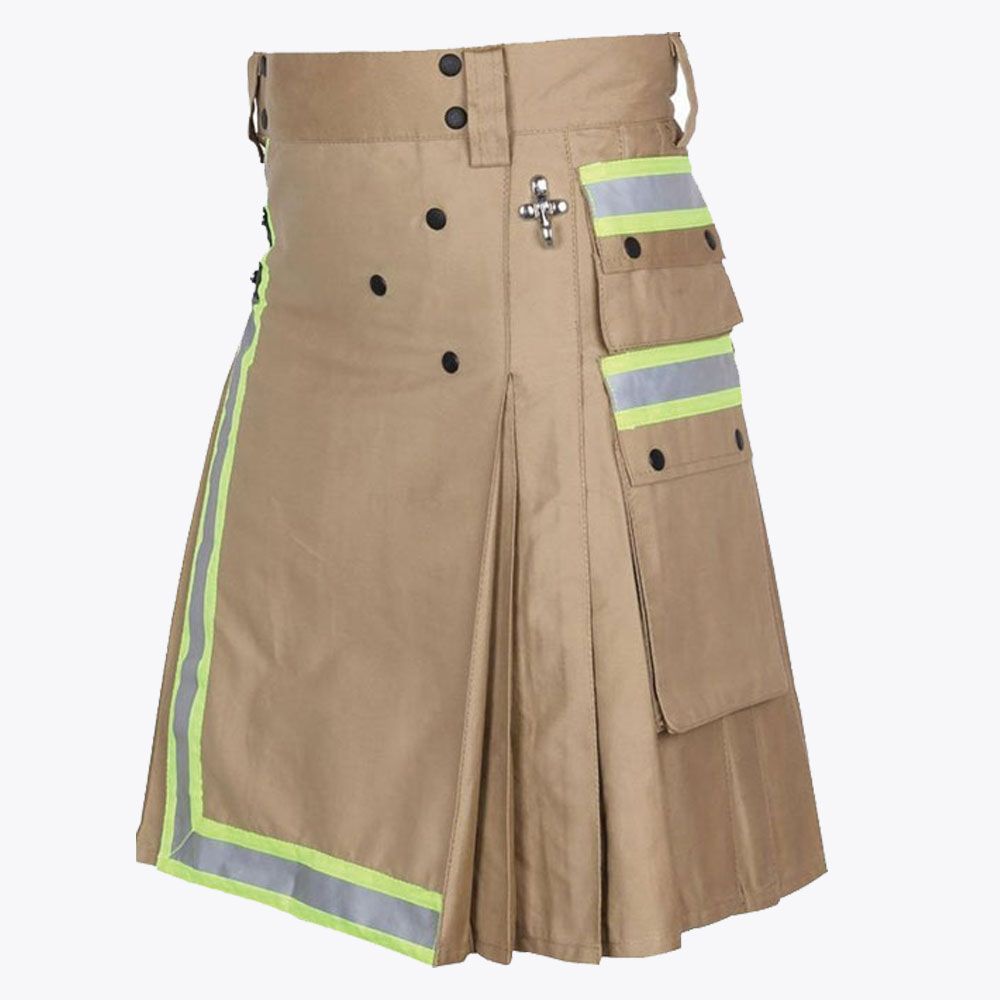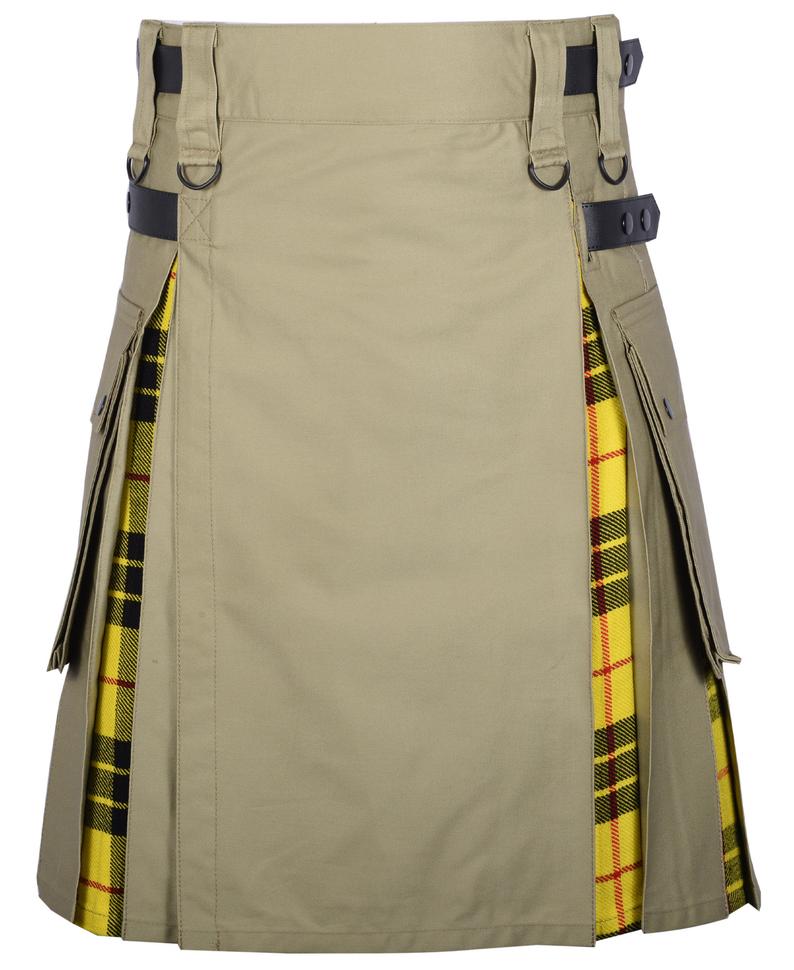The Essential Guide to the Khaki Kilt: Tradition, Style, and Utility
Posted by FAGENT ABRONT

The kilt, a symbol of Scottish heritage and pride, has evolved into a modern fashion statement that transcends borders. Among the myriad of styles, the khaki kilt stands out for its versatility, blending traditional aesthetics with contemporary utility. This article explores the khaki kilt in depth, covering everything from its historical roots to practical considerations for wearing one today.
What is a Khaki Kilt?
A khaki kilt is a variation of the traditional Scottish garment, known for its distinctive color that lends itself to both casual and formal occasions. Unlike the classic tartan patterns, a khaki kilt offers a more subdued, yet equally distinguished look. It can come in various forms, including the highly functional khaki utility kilt, which features added pockets and adjustments for a more practical wear.



The Utility Factor: More Than Just Style
The modern khaki utility kilt boasts a design that caters to the needs of today's active individual. With pockets on each side and pleating on the back, it retains the traditional silhouette while enhancing functionality. The inclusion of poppers and side straps for closure, along with a standard 24" drop, ensures comfort and adaptability. This design is particularly appealing for those seeking both aesthetic appeal and utility, providing ample storage for personal items without sacrificing style.
Historical Significance and Cultural Roots
The kilt, deeply rooted in Scottish and Irish heritage, symbolizes Gaelic identity and tradition. Originally worn for its practicality, it evolved into a proud emblem of clan affiliations and regional pride.
Scottish or Irish? The Origins of Kilts
The kilt is often associated with Scottish culture, though it holds significance in Irish heritage as well. Originally worn in Scotland, the kilt became a symbol of Gaelic identity, with different clans adopting specific tartan patterns. The khaki kilt, while not tied to clan tartans, embraces this cultural legacy in a color that suits modern preferences and applications.
Wearing a Kilt: Etiquette and Practicality
Wearing a kilt involves balancing tradition with modern sensibilities, adhering to etiquette while embracing personal style. Traditionally, kilts are worn at formal or cultural events, with accessories chosen to complement the occasion. Modern utility kilts, like the khaki variant, offer more flexibility, suitable for everyday wear while providing functionality with added pockets and adjustable features, merging historical respect with contemporary lifestyle needs.
Rules and Etiquette for Kilt-Wearing
While kilts offer flexibility in wear, certain traditions and rules can enhance the experience. These include the proper way to fold and wear the kilt, as well as the occasions deemed suitable for kilt-wearing. Modern adaptations, like the khaki utility kilt, offer more leeway in how and where they can be worn, reflecting a balance between tradition and contemporary lifestyle needs.
Choosing Your Khaki Kilt
When selecting a khaki kilt, consider factors such as the occasion, desired features (e.g., pocket size and placement, adjustable straps), and the overall look you aim to achieve. Companies like Kilt Box Shop offer a range of options, from sport utility kilts with adjustable waists and metal hardware to traditional designs, ensuring there's a kilt for every preference and need.
The khaki kilt represents a fusion of tradition and modernity, offering a versatile option for those looking to embrace kilt-wearing. Whether drawn to its historical roots or practical features, choosing a khaki kilt is a statement of style, cultural respect, and personal expression. As this garment continues to evolve, its place in both Scottish and global fashion is undoubtedly secured, offering a unique way to celebrate heritage while meeting the demands of contemporary life.
